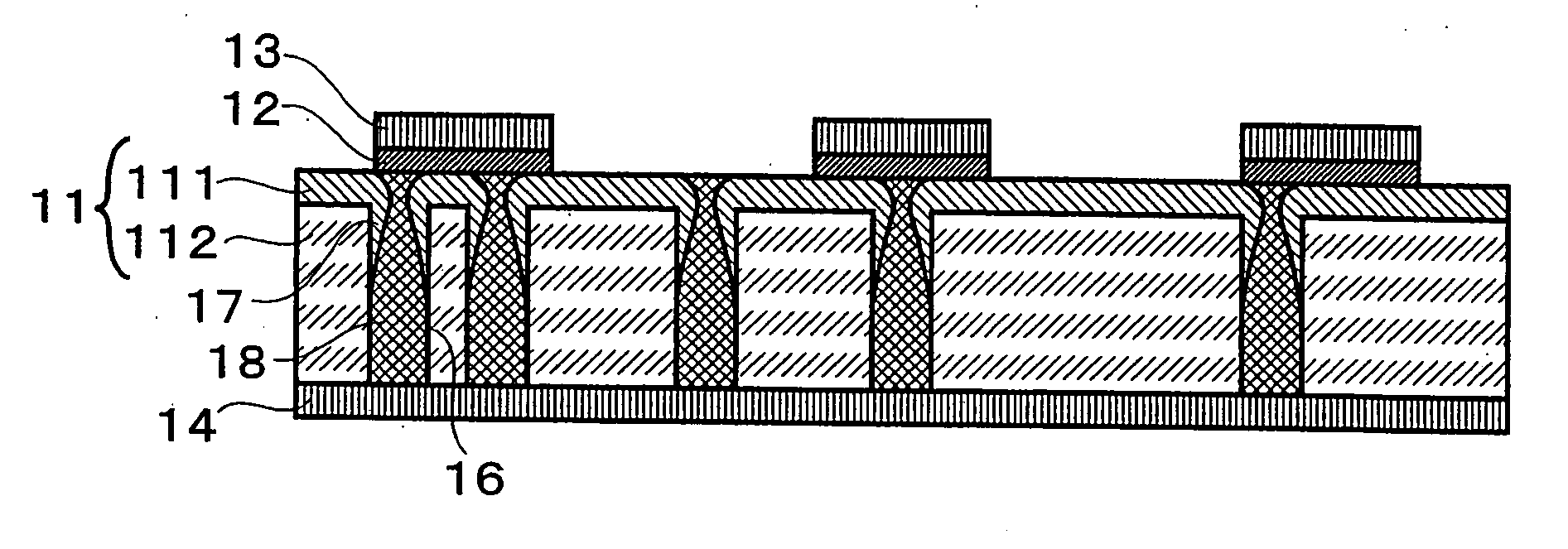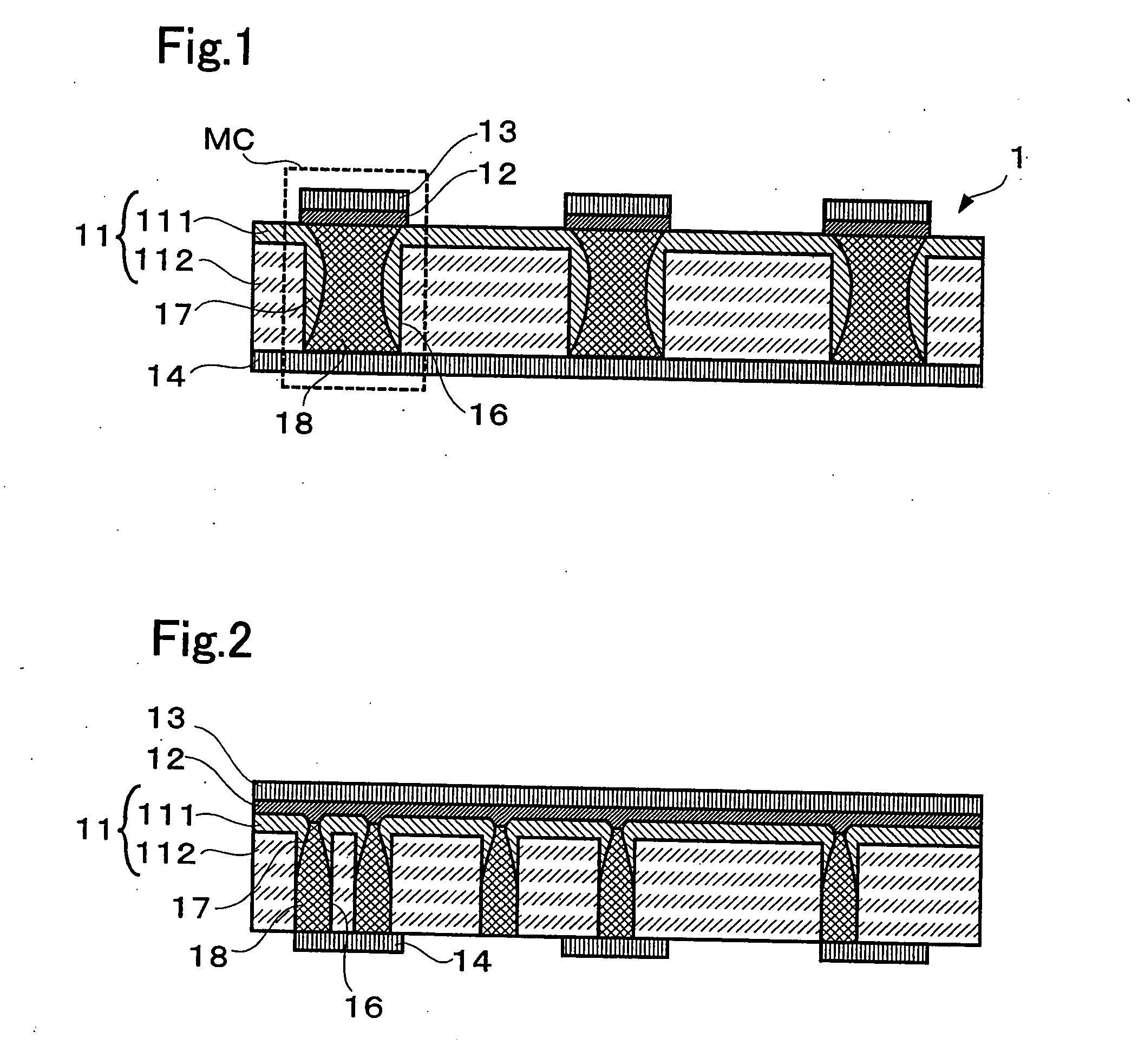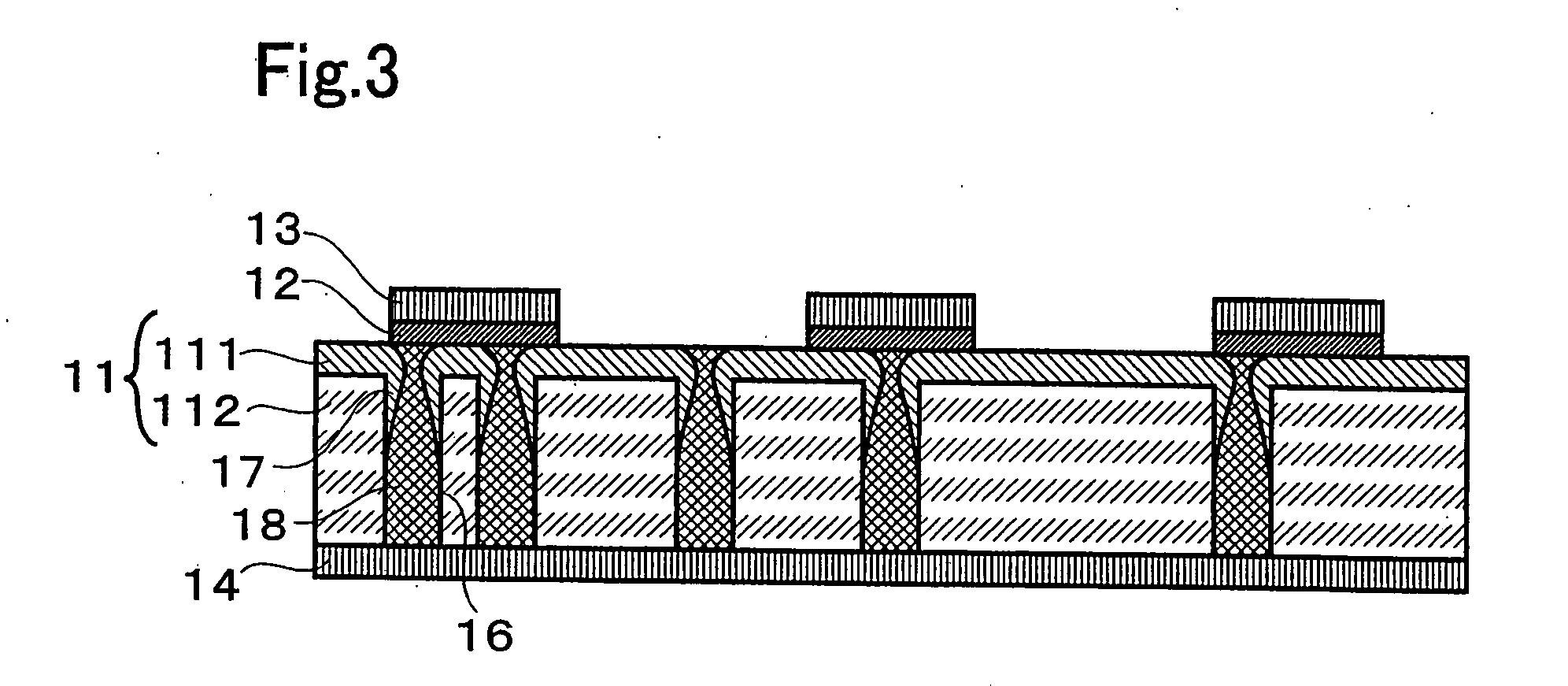Non-volatile memory and the fabrication method thereof
a technology of non-volatile memory and fabrication method, which is applied in the field of non-volatile memory, can solve the problems of insufficient large amount of electric power needed to write or delete data, and difficult to save power, so as to increase the possible number of data rewriting cycles and reduce power consumption.
- Summary
- Abstract
- Description
- Claims
- Application Information
AI Technical Summary
Benefits of technology
Problems solved by technology
Method used
Image
Examples
Embodiment Construction
[0041] Embodiments of the present invention will be described below with reference to the accompanying drawings.
(Non-Volatile Memories)
[0042]FIG. 1 is a cross-sectional view showing the main parts of a non-volatile memory according to one embodiment of the present invention. As shown in FIG. 1, a non-volatile memory 1 comprises an insulating substrate 11 that is formed by laminating an inorganic dielectric layer 111 and an organic dielectric thin film 112, recording layers 12 and upper electrodes 13 that are formed on the inorganic dielectric layer 111 side of the insulating substrate 11, and a lower electrode 14 that is formed on the organic dielectric thin film 112 side of the insulating substrate 11.
[0043] The inorganic dielectric layer 111 is formed of an insulator that is inert to the recording layer 12 during heat generation, and can be an oxide film of SiOx and the like, a nitride film of SiNx and the like, as well as SiO2—ZnS, SiO2—ZnSe, etc. For example, when the inorga...
PUM
| Property | Measurement | Unit |
|---|---|---|
| aspect ratio | aaaaa | aaaaa |
| aspect ratio | aaaaa | aaaaa |
| melting point | aaaaa | aaaaa |
Abstract
Description
Claims
Application Information
 Login to View More
Login to View More - R&D
- Intellectual Property
- Life Sciences
- Materials
- Tech Scout
- Unparalleled Data Quality
- Higher Quality Content
- 60% Fewer Hallucinations
Browse by: Latest US Patents, China's latest patents, Technical Efficacy Thesaurus, Application Domain, Technology Topic, Popular Technical Reports.
© 2025 PatSnap. All rights reserved.Legal|Privacy policy|Modern Slavery Act Transparency Statement|Sitemap|About US| Contact US: help@patsnap.com



